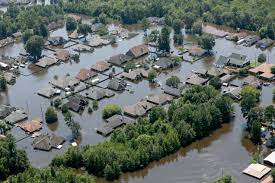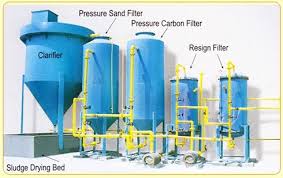What is Physical Habitat and Biological Assessments?
Physical habitat and biological assessments are parts of water quality monitoring programs that include physical habitat, biological, and traditional water chemistry and discharge assessments (USEPA, 2002).
What is Physical Habitat and Biological Assessments?
1. Physical Habitat Assessments
Physical variables like stream cross-section area, discharge, and number of riparian trees “habitat” that aquatic organisms occupy. These are the two approaches for measuring riparian habitat, geomorphology, and in-stream habitat.
• Transect-based sampling methods
Transect-based sampling methods consist of measuring selected habitat variables at predetermined points along multiple transects within a site.
Advantages:
i. Transect-based habitat sampling methods result in quantitative habitat data.
ii. Reduce observer bias.
iii. Ensure comparability among sampling sites, periods, and categories of interest (Simonson et al., 1994; Wang et al., 1996).
iv. Transect-based sampling methods are compulsory when quantitative information on water depth, water velocity, riparian characteristics, channel size, and adjacent land use is
needed.
• Visual-based habitat methods
This method involves estimation rather than actual measurements of a site’s variables.
Advantages:
i. Visual habitat methods require less equipment and time than quantitative habitat measurements.
ii. Visual-based habitat methods depend on the training and skills of the observer. Scores differ among observers (Somerville and Pruitt, 2004).
iii. Visual-based habitat sampling methods are useful for descriptive purposes and for preliminary habitat assessments intended to assist with site selection.
iv. Visual-based methods are used to produce a habitat quality index (Barbour et al., 1999) that provides an easily interpretable value representative of the physical habitat quality of the site.
Read Also: Man-Environment Interaction (Environmentalism, Possibilism, and Probabilism)
2. Biological Assessments
Sampling methods for aquatic macroinvertebrates:
1. The dip net is a net with a wooden handle used for sampling macroinvertebrates.
Advantage
It can sample many different types of microhabitats found within a site.
Disadvantage
1. It is a qualitative sampling technique because one cannot calculate density (number of organisms per square meter) from dipnet samples.
2. Surber sampler is a portable, stream bottom sampler made of two folding frames with netting fixed at right angles. For sampling, the horizontal frame is positioned in the substrate.
Silt and rocks are stirred up so that the current transports bottom organisms into the net. It is used in quantitative biomonitoring studies for evaluating the effects of different disturbances in gravel bottom streams (Resh and McElravy, 1993).
Fish sampling: Fish are sampled using hand or gill nets, hooks and lines, and seines. The electrofishing method though useful for fish sampling elsewhere is not recommended in Nigeria. Record data as catch per unit time.



